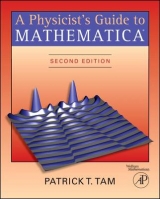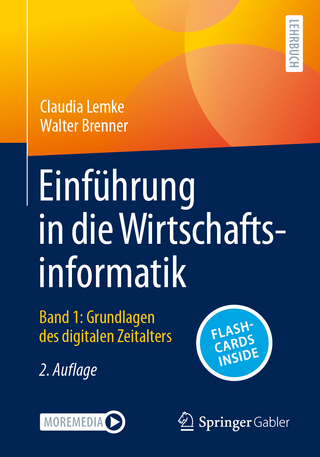
A Physicist's Guide to Mathematica
Academic Press Inc (Verlag)
978-0-12-683190-0 (ISBN)
- Titel erscheint in neuer Auflage
- Artikel merken
"A Physicists Guide to Mathematica[registered]" teaches students and professional physicists how to master Mathematica using examples and approaches that will appeal to them. The book illustrates the usefulness of Mathematica in learning, teaching, and carrying out research in physics. Part One gives a practical, physics-oriented, and self-contained introduction to the program. Part Two covers the application of Mathematica to mechanics, electricity and magnetism, and quantum physics. Mathematica enables the user to solve a wide range of physics problems, from the most important to those that are just for fun, and provides an environment that allows the user to develop a greater intuitive understanding of physics. This book aids the reader in using Mathematica for numerical, symbolic, and graphical calculations, and also demonstrates the programs capability to animate two- and three-dimensional graphics. Tams treatment of the subject is greatly detailed, and makes this book an essential reference for anyone needing an introduction to Mathematica's application to physics.
This book teaches upper-division and graduate physics students as well as professional physicists how to master Mathematic[registered], using examples and approaches that are motivating to them. It also shows that this computer algebra system can be a powerful and wonderful tool for learning, teaching, and doing physics. It requires no prior knowledge of Mathematica or computer programming. It includes a disk containing all Mathematica input used in the text for practical application, which can be used by both Macintosh and Windows users.
Patrick Tam received his Ph.D. in theoretical physics from Cornell University and is a professor of physics at Humboldt State University. He is an associate editor of Mathematica in Education and Research, and his papers have appeared in Computers in Physics and The Physics Teacher. He has given numerous invited talks on Mathematica, and has been the leader of many Mathematica workshops for the American Association of Physics Teachers and a two-week computer algebra workshop supported by a National Science Foundation faculty enhancement grant. He has served as a Mathematica consultant for Wolfram Research, Inc. and Carleton College.
Preface. Mathematica with Physics. The First Encounter: The First Ten Minutes. A Touch of Physics. On-Line Help. Error Messages. Packages. Notebook Interfaces. Interactive Use of Mathematica: Numerical Capabilities. Symbolic Capabilities. Graphical Capabilities. Lists. Problems. Programming in Mathematica: Expressions. Patterns. Functions. Procedures. Graphics. Programming Styles. Packages. Physics with Mathematica. Mechanics: Falling Bodies.Projectile Motion. The Pendulum. The Spherical Pendulum. Problems. Electricity and Magnetism: Electric Field Lines and Equipotentials. Laplaces Equation. Charged Particle in Crossed Electric and Magnetic Fields. Problems. Quantum Physics: Black Body Radiation. Wave Packets. Particle in a One-Dimensional Box. The Square Well Potential. Angular Momentum. The Kronig-Penney Model. Problems. Appendices: The Macintosh and Windows Front Ends. Special Input Forms. Built-In Mathematica Objects.The Infrastructure of Mathematica. Solutions to Exercises. Solutions to Problems. References. Subject Index.
| Erscheint lt. Verlag | 28.4.1997 |
|---|---|
| Zusatzinfo | Illustrations |
| Verlagsort | San Diego |
| Sprache | englisch |
| Maße | 187 x 235 mm |
| Gewicht | 935 g |
| Themenwelt | Informatik ► Office Programme ► Outlook |
| Mathematik / Informatik ► Informatik ► Theorie / Studium | |
| Mathematik / Informatik ► Mathematik ► Angewandte Mathematik | |
| Naturwissenschaften ► Physik / Astronomie | |
| ISBN-10 | 0-12-683190-4 / 0126831904 |
| ISBN-13 | 978-0-12-683190-0 / 9780126831900 |
| Zustand | Neuware |
| Haben Sie eine Frage zum Produkt? |
aus dem Bereich



